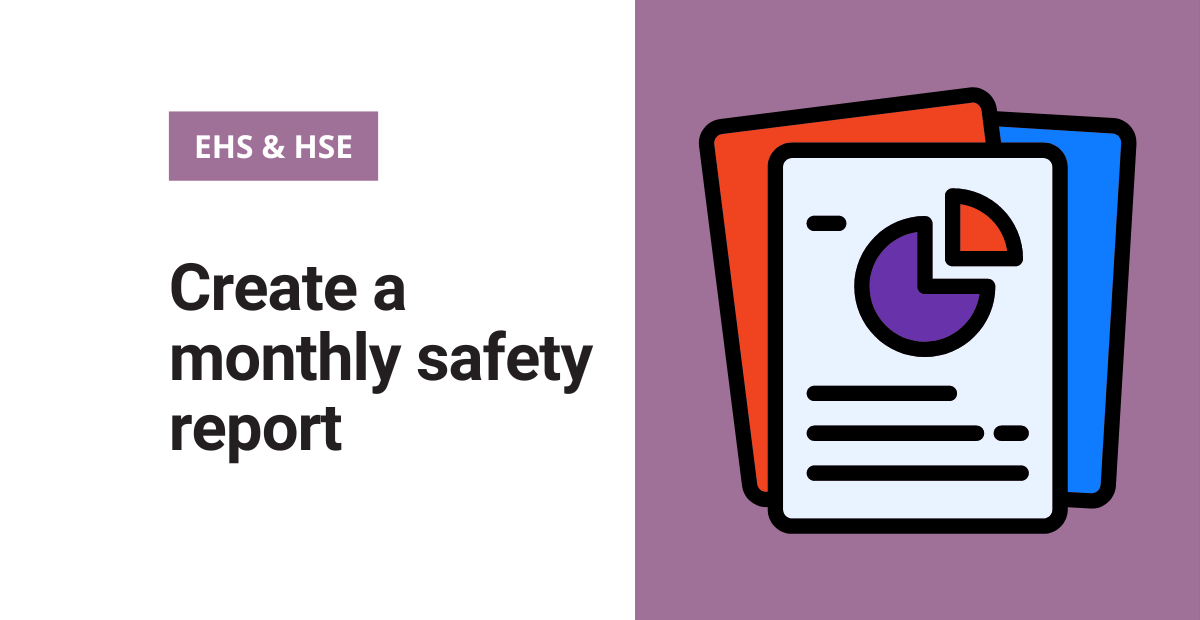One of the more tedious areas of EHS management is deciding how you’ll report your performance to senior leadership. This process involves choosing which metrics to track, collecting data, and organizing it in a way that accurately reflects your team’s progress.
A simple way to do this is to create a template for your team to fill out and review together during your weekly meeting. Once that is done, you can take the information you compile as a team and combine it into one master report that you submit monthly to upper management.
We’ve provided a basic template that you can use to get started creating a monthly safety report below. In each section of this post, we’ll walk through the types of information you should consider adding to your report.
Injury metrics
Reporting injury data is a non-negotiable section of a monthly recap. Here are some metrics that you can use to communicate your site’s performance in this area.
Near misses
If you don’t currently document near misses, you need to. They are a lagging indicator of how your site’s risk prevention strategies are/are not working.
First aid
A first aid event is anything that results in an injury needing first aid care on site but not further medical treatment. An example of this would be a team member who superficially cuts themselves and needs a Band-Aid but no further treatment for their cut.
Lost time injuries
These types of injuries can quickly add up. It’s important to inform upper management of any pending or ongoing lost time injury cases.
OSHA recordable incidents
A monthly safety report should include a list of all the recordable incidents for that month. Consider listing them out by type of incident, type of injury/damage, etc., so leaders can better understand the underlying issues.
Also, think about including your determined root causes for each incident and share the steps you’re taking to prevent them in the future.
Key performance indicators
Your report should have a section for your department’s KPI’s. Examples of common safety KPI’s include things like:
- Safety training metrics (training past due, test scores, etc.)
- Workplace safety audit results
- Injury rates such as the TRIR
- Employee perception survey results
- Regulatory inspections
Safety wins
Don’t forget to focus on the wins you’ve had in the past month. Create space in your safety report to highlight things like:
- Teams goals you’ve reached
- Increases in training performance
- New safety initiatives
- Process improvements
You may also want to provide updates on the activities that your safety committee is working on or to shout out individual members of your team.
Safety challenges
No report would be complete without a section on areas of improvement or current challenges you’re trying to solve. This is your chance to notify upper management of any barriers your department is facing.
In addition to the safety challenges, include the things you’re doing to overcome them. Share your plan for addressing these problems and any support you’ll need to do so.




